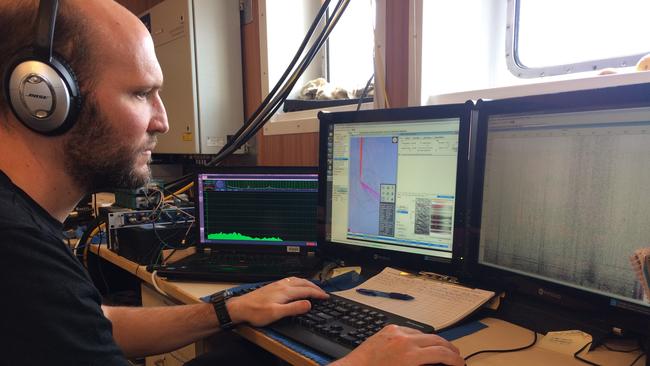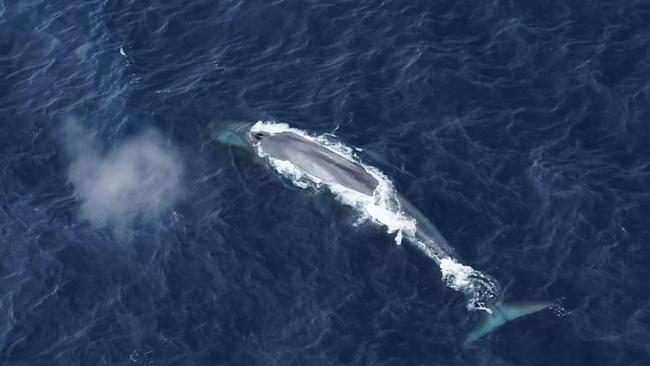Australian Antarctic Division’s research on blue whale songs leads to hopeful discovery
Nearly two decades of listening to the songs of the world’s critically endangered and largest animal has led to a groundbreaking discovery. Listen to the whale song.
Tasmania
Don't miss out on the headlines from Tasmania. Followed categories will be added to My News.
Thousands of hours listening to the songs of the largest animal on the planet has led scientists at the Australian Antarctic Division to a hopeful discovery.
For nearly 20 years, the marine mammal research team from the AAD have been using free-floating sonobuoys as listening stations to detect and track Antarctic blue whales.
“We’ve listened right throughout the Southern Ocean over seven voyages and we’ve heard critically endangered Antarctic blue whales throughout the Southern Ocean so they’re still there,” Mammal acoustician Dr Brian Miller said.
“That’s an important message that we’ve learned.”
Antarctic blue whales, a subspecies of the blue whale, are one of the most critically endangered animals after nearly being wiped out during industrial whaling.

Dr Miller said there were believed to be fewer than 200 of them in 1965, after 360,000 were killed during industrial whaling.
“Since there was a ban on hunting them in 1965, they’ve been very infrequently encountered so it’s been really difficult to know whether or not they’re recovering,” he said.
“In the surveys where we’ve gone back to the same place in more recent years, we’re hearing them more frequently than the older surveys so that’s a good sign as well.
“We’re either getting better at listening to them or their numbers are increasing or both. And those messages are positive no matter how you interpret them.”
The long-term research has recently been published in the Frontiers in Marine Science Journal as a scientific snapshot of Antarctic blue whales using acoustic data.

“As distinctive and conspicuous as they are visually, they’re even more conspicuous acoustically. They produce these incredibly loud, incredibly powerful low-frequency sounds and these sounds can be detected across ocean basins,” Dr Miller said.
“I was leading an international team of acousticians to listen for these animals in order to steer towards them so that the rest of the scientists on board can do their job.
“We had specialists on board who could take photographs of these animals to identify them, who could take biopsy samples to do genetics and understand their diet and their population structure. We had experts who could deploy satellite tags on these whales to track their long-term movement.

“We’re going to extreme lengths to study these animals. To answer really fundamental questions for conservation and management.”
While chartering on a New Zealand fishing vessel, Dr Miller said it was a relief when they saw Antarctic blue whales for the first time.
“On that voyage, we saw over 100 whales, and we photographed over 50 different individuals,” he said.
“We had 100 encounters with Antarctic blue whales and that’s compared to the 200 to 300 encounters had over the previous 30 or 40 years.
“It turns out listening to them is an incredibly efficient way to find them and study them.”




